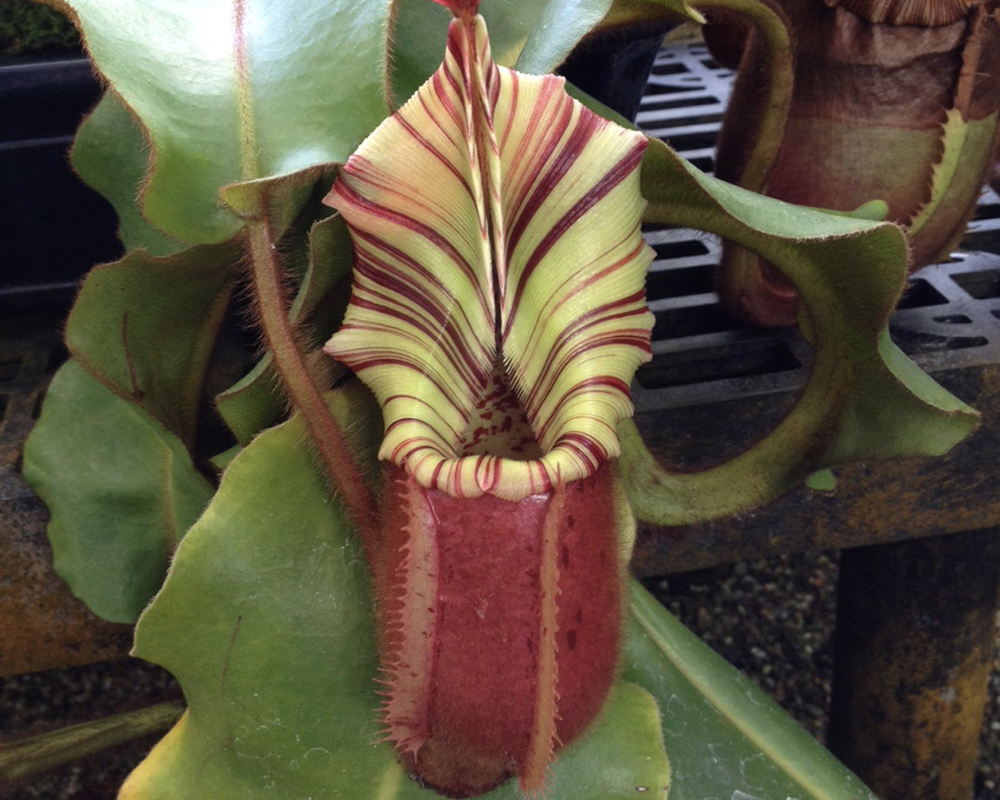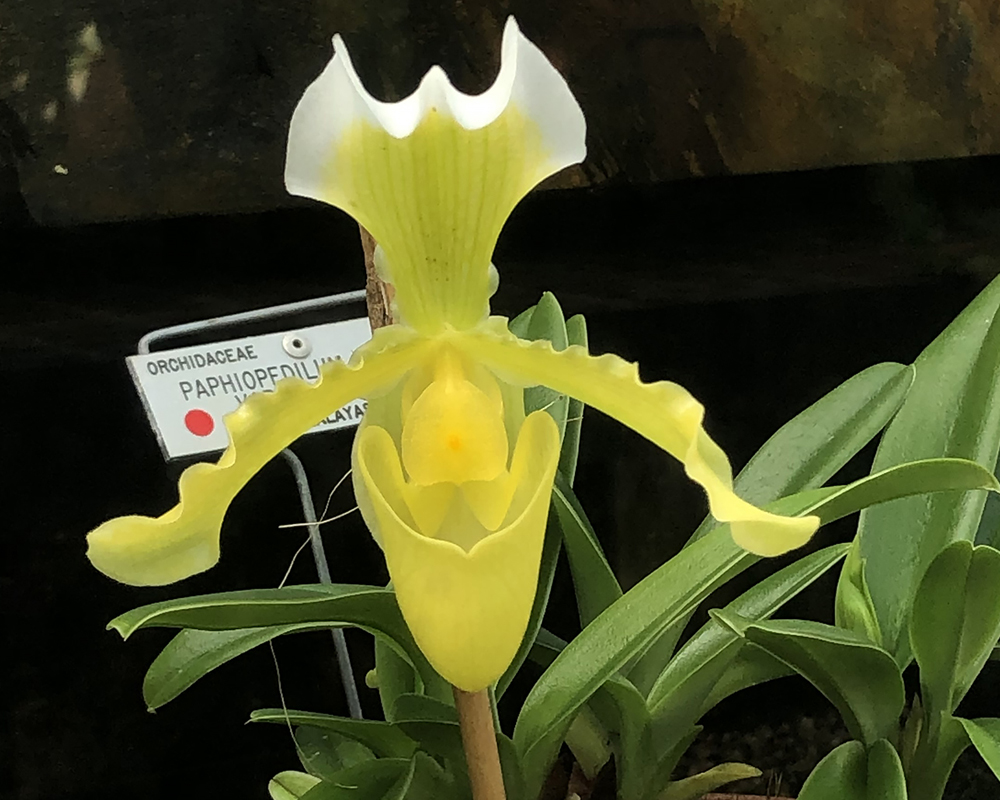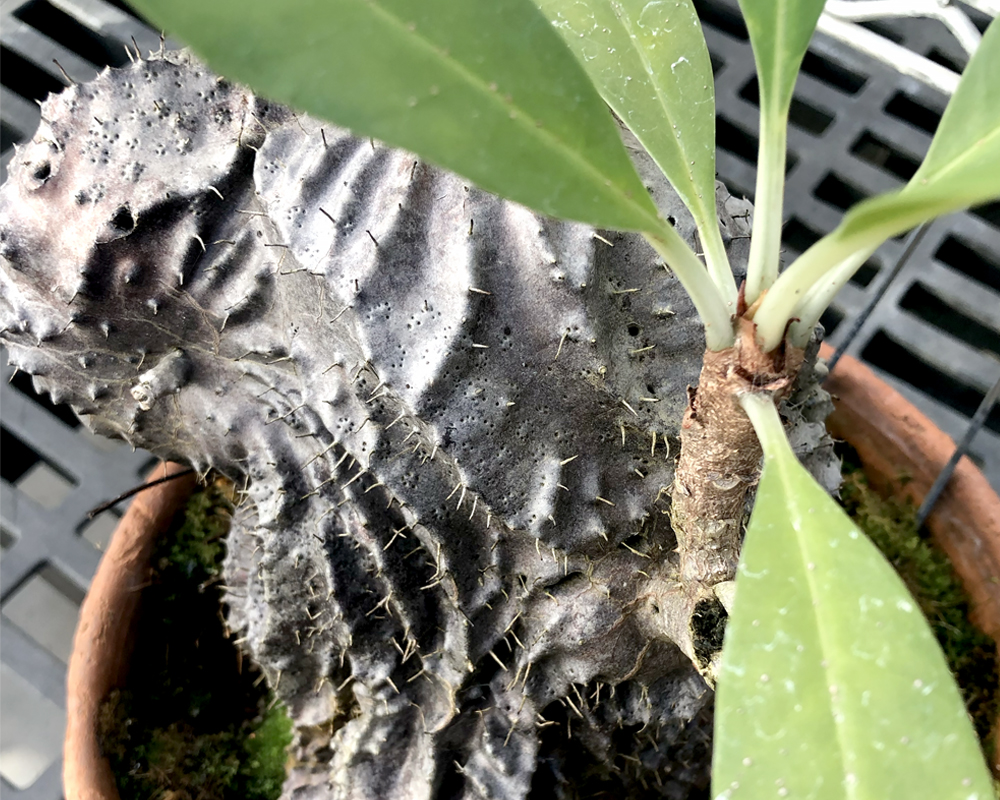
Orchid, Fern, and Carnivorous Plant House
The warm, humid environment of our Orchid, Fern, and Carnivorous Plant House is home to many unusual and beautiful specimens, largely from tropical habitats. Because the display is rotated regularly, there are always interesting new plants to discover regardless of the season—the OFC Plant House is always a fascinating place to visit.
Orchids
The orchid family (Orchidaceae) has the greatest number of species of all plant families and is known for its flamboyant flowers, though many are small and inconspicuous. Orchids occur in a wide range of habitats all over the world, including some seemingly inhospitable locales. Many are epiphytes—plants that grow on other plants—such as in the canopy of trees; however, they’re not parasites.
While wandering through the orchid collection, look for the Venus slipper (Paphiopedilum) from tropical Asia. With their pouchy flowers, they look as if they might be carnivorous—they do trap insects, but just to trick them into pollination. And the spider orchid (Brassia verrucosa) sports elongated sepals and petals designed to attract its pollinator: a spider-eating wasp. Its long-lasting flowers smell, surprisingly, like black pepper.
Ferns
Ferns are an ancient lineage of non-flowering plants that reproduce by spores. There are many families of ferns found all over the world, in habitats from the tropics to the desert—these plants can be aquatic, terrestrial, or epiphytic.
In this collection, seek out the Ant fern (Lecanopteris) which provides a habitat for ants to live inside their swollen stems; in return, the ants protect their host from predators. Many kinds of plants are associated with ants and are known as ‘myrmecophytes.’
Some ferns can also climb like vines. There are about 40 species of Lygodium, dwelling in tropical to temperate zones—some of which can twine more than 15 meters (50 ft) up into the trees. Lygodium have “dimorphic” fronds, meaning that they produce two kinds of leaves. The fibrous stems of climbing ferns are often used for basketry and other crafts.
Carnivorous Plants
Carnivorous plants are not from closely related plant families, but we’ve grouped them together because of their shared ability to capture and consume animals. The evolution of carnivory in plants is thought to have developed in response to nutrient-poor environments. They’re found all over the world in bogs, fens, and other moist habitats.
Look for the Asian tropical pitcher plant (Nepenthes) which makes enzyme-filled leaf traps— pitchers—at the tips of its twining stems. These can catch all sorts of bugs to feed the plant; ours eat a lot of ants.
The Roridula gorgonias from the Western Cape region of South Africa doesn’t produce digestive enzymes on its sticky leaves. Rather, it relies on assassin bugs (Pameridia) to eat any insects caught in the dew. The assassin bug’s excretions are what feeds the Roridula.
Banner photo: Sword fern



